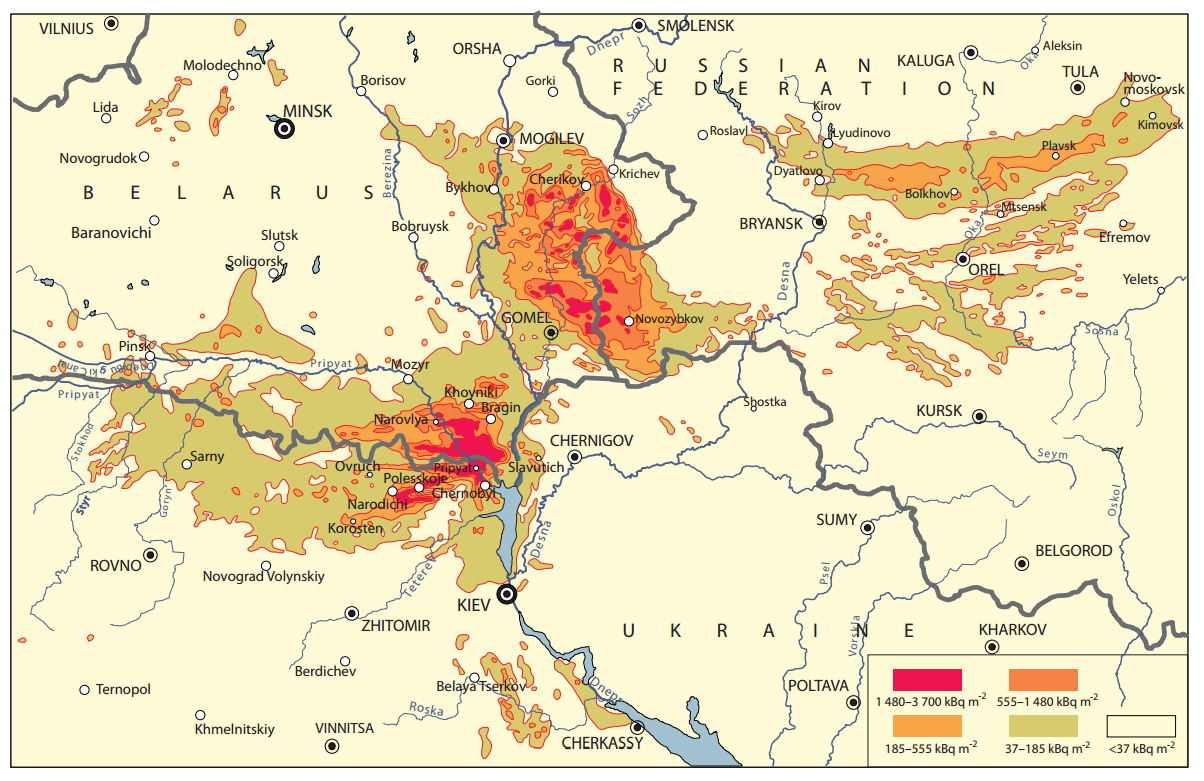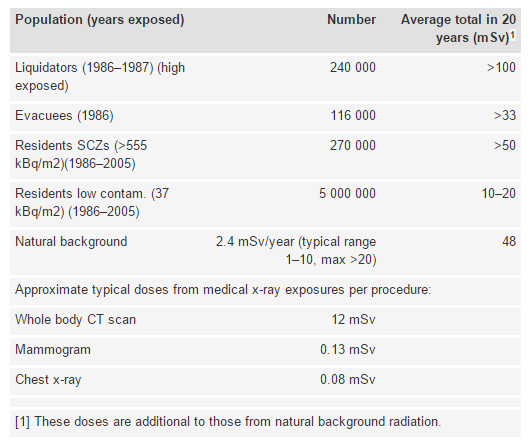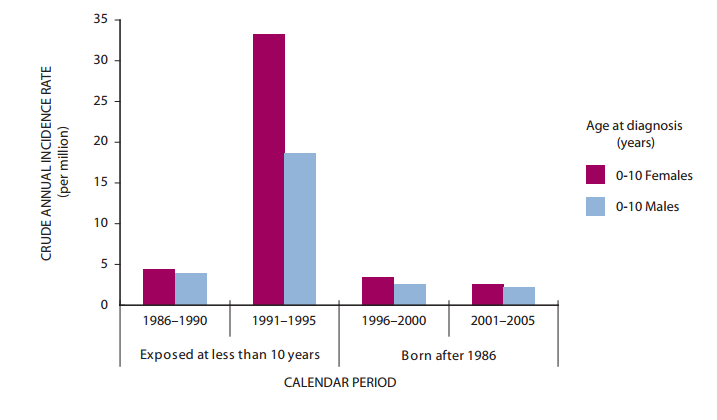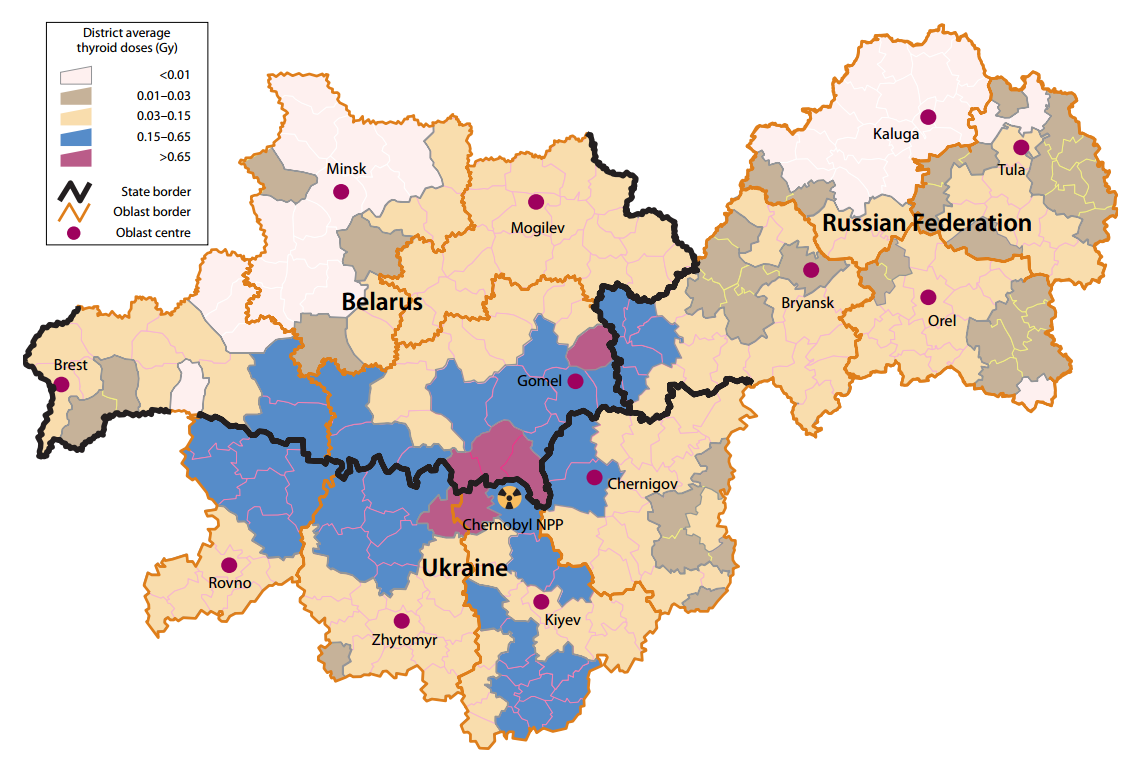When nuclear power is mentioned in a conversation, the
Chernobyl disaster is often one of the topics quickly brought up, and for good
reason; it is one of only two disasters, alongside Fukushima, to score a 7 (the
highest) on the International nuclear and Radiological Event Scale (PIF).
I shall quickly summarise the causes of the disaster and then look into its impacts.
 |
| International Nuclear and Radiological Event Scale (IAEA) |
Causes
On the 25th April 1986, the crew at Chernobyl
reactor 4 began arrangements for a test that would run the plant at a very low
power, to determine how long the turbines would carry on spinning and supplying
energy to the water circulating pumps after a loss of power (WNA 2016). The design of these
reactors was such that they were highly unstable at the low power that this
test would operate at, mainly due to accelerated nuclear chain reaction and
power output if the cooling water for the reactors was lost. For the test to be
carried out, the automatic shutdown mechanisms also had to be disabled, which
did not comply with operational procedures; however, the operators had not even
been informed of the possible explosive consequences of the test they were
about to perform (WNA). These factors all
combined to put the reactor in a very unstable condition before the test had
even started.
 |
| Location of Chernobyl in Ukraine (Wordpress) |
The test began in the early morning of the 26th,
with the inserting of control rods into the reactor creating a large power surge
that created a large increase in heat (NEI 2015). The hot fuel interacted with the cooling
water to rapidly create steam which in turn increased the pressure. This increase
of pressure partially removed the 1000 ton cover off the top of the reactor,
jamming the half-inserted control rods, and rupturing the fuel channels (WNA 2016). The
steam generation spread throughout the rest of the core and created a steam
explosion, which released the radioactive fission products into the atmosphere.
The Chernobyl power plant lacked the containment structure that is seen in most
nuclear power plants around the world. Without this, the radioactive fission products
were free to escape into the atmosphere (NEI 2015).
Impacts
Soviet scientists reported that between 13% and 30% of the
192 tonnes of fuel was released into the atmosphere for a period of roughly 10
days (NEI 2015). The main problematic radioactive materials released were the short-lived Iodine-131
with a half-life of 8 days; and the longer lived Caesium-137 with a half-life
of roughly 30 years (WNA 2016) (A half-life being the amount of time it takes for the
amount of material to decrease(decay) by half). Substantial amounts of
radioactive material were deposited in North-West Ukraine, Belarus and parts of
Russia, with Belarus receiving 60% of contamination that fell on the Soviet
Union (NEI 2015). This resulted in the resettlement of civilians over the years, with 116,000
resettled by the summer of 1986, and a further 230,000 in the coming years (UNSCEAR 2008).
 |
| Map of Caesium-137 deposition levels as of December 1989 (UNSCEAR 2008) |
Around 350,000 clean-up workers, or liquidators, were brought in to help contain and clean up the radioactive debris during the following two years after the disaster. 240,000 of these liquidators received the highest radiation doses while working within the 30km zone around the reactor (WHO 2006). 134 liquidators received doses even higher and were diagnosed with acute radiation sickness (ARS), with 28 workers dying in 1986 due to this (UNSCEAR 2008). In the table below, you can see that the level of radiation that populations received following the disaster is actually quite low and comparable to natural background levels. It is estimated that in the top three exposed populations, Liquidators, Evacuees and Residents of the SCZs, cancer deaths from radiation exposure has only increased 3-4% above the norm; while in the residents with low contamination, it has potentially only risen 0.6%
 |
| Average radioactive dose accumulated over 20 years (WHO 2006) |
There was a large increase in thyroid cancer following the disaster in those exposed as children or adolescents (>14 years old) (UNSCEAR 2008). This was due to the release of radioactive iodine which was then taken up into the thyroid. This was not the result of direct exposure however, poor management in the following weeks meant milk was consumed from cows that had pastured in iodine contaminated fields. Radioactive iodine became concentrated in their milk, which when drank by children with preexisting iodine deficiencies, caused the iodine to accumulate in the thyroid at greater concentrations (WHO 2006). If milk had been brought in from elsewhere, a lot of the radiation-induced thyroid cancer could have been avoided. The prognosis for thyroid cancer is very good however, with treatment being highly effective even in advanced stages (WHO 2006).The graph below shows that as Iodine has a low half-life, thyroid cancer was only prevalent in children under the age of 10 at the time of the incident and has not affected those born after the disaster.
 |
| Thyroid cancer incidence rate in Belarus for children under 10 years old at diagnosis (UNSCEAR 2008) |
 |
| Estimated average thyroid doses to children and adolescents living at the time of the accident (UNSCEAR 2008) |
Overall the Chernobyl disaster has had a massive effect on the local human population and the local environment, clearly showing the extreme negative effects that a nuclear disaster could have with a 4300km2 exclusion zone now in place around the old reactor (WNA 2016). Also needing to be factored in is the continued maintenance of the structure that houses the old reactor to prevent further radioactive leaks. However studies done at the time seem to have overestimated the effects that radiation would have on its immediate surroundings. Recent studies have shown that deaths from the resulting radiation are much lower than they had anticipated, and that the environment inside the exclusion zone is in fact thriving, with a much greater biodiversity and abundance of species than before (WNA 2016). Perhaps this disaster was not as bad as we once thought?
No comments:
Post a Comment